At 12:52 Beijing time on September 5th, 2022, Luding county of Ganzi prefecture in Sichuan Province, was hit by an 6.8 magnitude earthquake with its epicenter being 16 km deep underground, which caused 93 deaths, 25 missing, and 25790 affected. On September 6th, within 24 hours of this tragedy, Prof. DI Baofeng and his research team from Institute for DisasterManagement and Reconstruction (IDMR),Sichuan University was already on the way to the disaster-stricken area together with other experts assigned by Department ofEmergency Management of Sichuan Province.
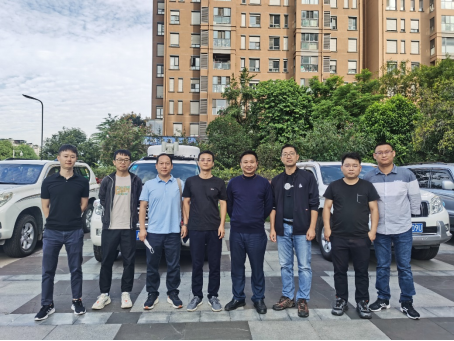 |
| Fig.1 The expert team assembles at Department ofEmergency Management of Sichuan Province before heading to the disaster area |
The epicenter of this earthquake was located near Moxi Fault in the southeastern segment of the Xianshui River Fault Zone in Hailuogou scenic aeras, where thehigh and steep mountain slopes, complex geological conditions andfrequent aftershocks resulted in a large area of landslides. At the same time, the weather changed sharply after the earthquake, resulting in continuous rainfall, the road to the epicenter of the situation is very complex.
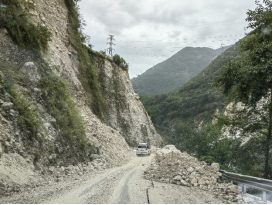
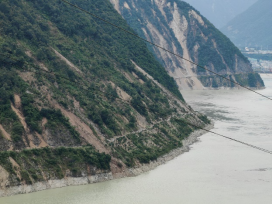
Fig.2 Traffic conditions in the earthquake-strucken area were complicated, and the expert team risked aftershocks to go to the epicenter to carry out investigations
From September 6th to 10th,riskingaftershocks and secondary disasters, the team of experts conductedclose-rangefield investigations in Moxi, Yanzigou, Detuo and other townships, to assess the buildingstructures,the extentandproportion of damage,and the typical damagefora total of 200 typical damaged houses,andmore than 30 municipalinfrastructureand transportation facilities. In Moxi town, roads buried by landslidesmade it impossible to reach theepicenter located within the Hailuogou scenic area. However, the group of experts still used drones to conduct aerial surveys ofthetypical geological disastersitesin areas such as Hailuogou Gully.


Fig.3 The expert team investigated the earthquake damage and surface pulling in the epicenter of Moxi town
In Detuo town, roads were cut off in theseverelyhit villageslike Wandong and Lianhe. In order to ascertain the extent of the damage to these villages, the group followed local residents and forest firefighter teamon foot into Lianhe Village, which is located above the mountains. Field visits were made on the damage of farm houses and the livelihood of farmers, and geological hazardsrisk areason the mountains wereassessed.


Fig.4 The expert team walked on foot to Lianhe town
On September 9th, at LudingEarthquakeReliefand Rescue Headquarters, afterthebriefing on the latest relief progress of the earthquake, an expert consultation and exchange meeting was held.Duringthis meeting, based on the field investigation and the previousearthquake assessment experience, theexpertteam explained the key and difficult problems in theprocess, and advised the front-line staff. Theexpert team also stressed the importance of earthquake damageinvestigation and assessment for the effective recovery and reconstruction, and fully expressed their commitment to assistthelocalstaff to carry out disaster damage assessment scientifically and accurately.
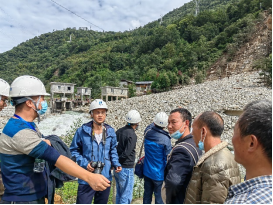
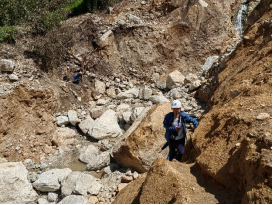
Fig.5 Expert team investigating damaged hydropower stations and geological hazards in Yanzigou town
Over the next few days,SCUexpert team continued their work toprovide consultation and conductinvestigationsin other typical areas of the earthquake to ensure an accurate understanding of the loss and damage characteristics caused by the earthquake.

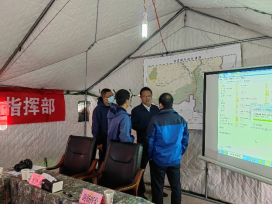
Fig.6 Expert team in LudingEarthquakeReliefand Rescue Headquarters for discussions
Inrecentyears, IDMRhas been involved in theimmediateinvestigation of several disasters such as “6·10”Markang, “6·01”Lushan Earthquake, “9·16” Luxian Earthquake and “7·20” Zhengzhou Heavy Rainstorm. Their team hasbecome an important force in the field of emergencyresponse and disaster evaluation inSichuan province and even in our country,of which their work has been highly recognized byMinistryof Emergency Management, Ministry of Education, Department of Emergency Managementof Sichuanprovince andthe local governments in the disaster-strickenareas. To recognize their contributions, Sichuan provincial government has built a thinktank named “Natural Disaster Reconstruction and Emergency Management” and a joint lab named “ Sichuan Province Department of Emergency Management– Sichuan University Integrated Disaster Reduction Research center”in IDMR,toencourage them togive full play to its interdisciplinary advantages in the field of disaster science and contribute more to disaster prevention, mitigation and emergency management.
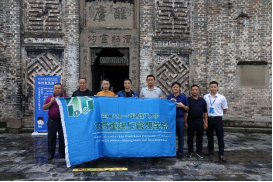 |
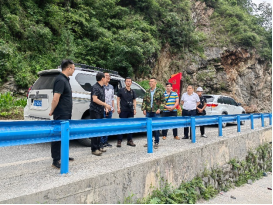 |
| Fig.7-1 IDMR team conducted a survey of earthquake damage to cultural relics in the "9.16" Luxian earthquake area |
Fig.7-2 IDMR team investigated the damage to road facilities in the "6.1" Lushan earthquake area |
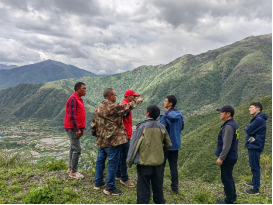 |
 |
| Fig.7-3 IDMR team investigated the secondary geological hazards in the “6.10” Markang earthquake area |
Fig.7-4 Teachers of IDMR verified housing damage data in the "6.10" Markang earthquake area |

